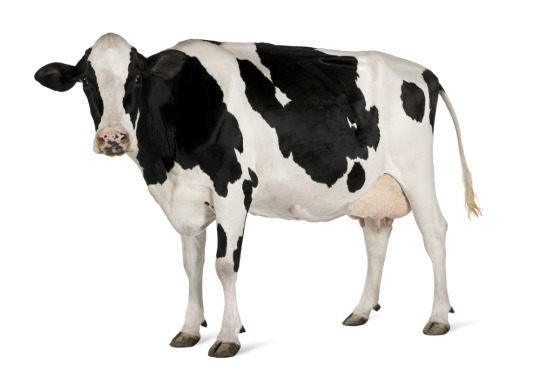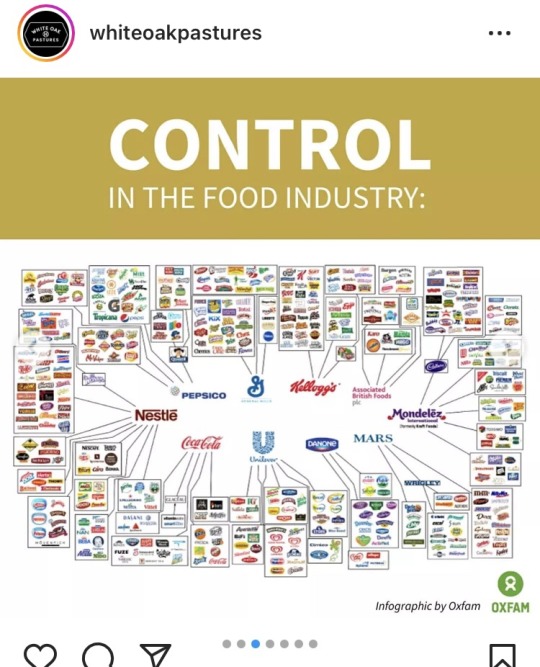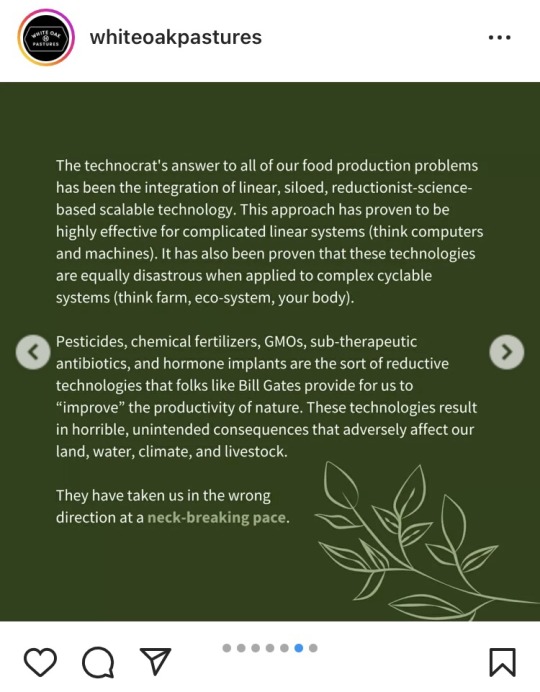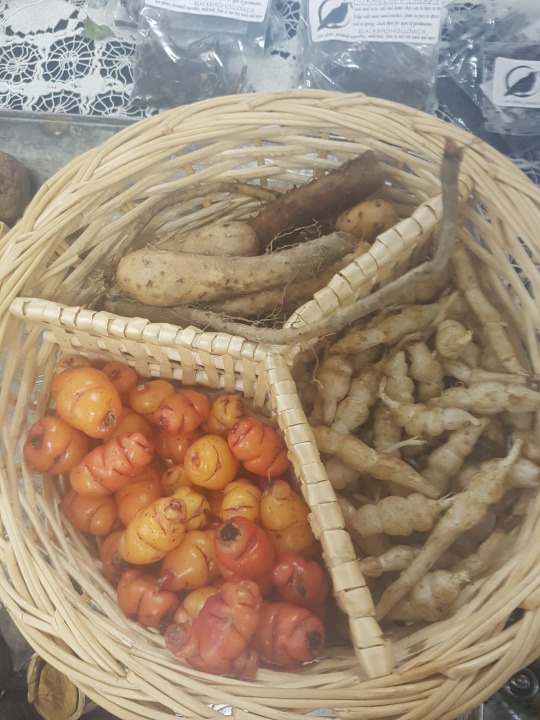#regenerative farming
Note
hey, how do you cope with people saying we only have a small amount of time left to stop the worst effects of climate change? no matter how hopeful and ok i am, that always sends me back into a spiral :(
A few different ways
1. The biggest one is that I do math. Because renewable energy is growing exponentially
Up until basically 2021 to now, all of the climate change models were based on the idea that our ability to handle climate change will grow linearly. But that's wrong: it's growing exponentially, most of all in the green energy sector. And we're finally starting to see proof of this - and that it's going to keep going.
And many types of climate change mitigation serve as multipliers for other types. Like building a big combo in a video game.
Change has been rapidly accelerating and I genuinely believe that it's going to happen much faster than anyone is currently predicting
2. A lot of the most exciting and groundbreaking things happening around climate change are happening in developing nations, so they're not on most people's radars.
But they will expand, as developing nations are widely undergoing a massive boom in infrastructure, development, and quality of life - and as they collaborate and communicate with each other in doing so
3. Every country, state, city, province, town, nonprofit, community, and movement is basically its own test case
We're going to figure out the best ways to handle things in a remarkably quick amount of time, because everyone is trying out solutions at once. Instead of doing 100 different studies on solutions in order, we get try out 100 (more like 10,000) different versions of different solutions simultaneously, and then figure out which ones worked best and why. The spread of solutions becomes infinitely faster, especially as more and more of the world gets access to the internet and other key infrastructure
4. There's a very real chance that many of the impacts of climate change will be reversible
Yeah, you read that right.
Will it take a while? Yes. But we're mostly talking a few decades to a few centuries, which is NOTHING in geological history terms.
We have more proof than ever of just how resilient nature is. Major rivers are being restored from dried up or dead to thriving ecosystems in under a decade. Life bounces back so fast when we let it.
I know there's a lot of skepticism about carbon capture and carbon removal. That's reasonable, some of those projects are definitely bs (mostly the ones run by gas companies, involving carbon credits, and/or trying to pump CO2 thousands of feet underground)
But there's very real potential for carbon removal through restoring ecosystems and regenerative agriculture
The research into carbon removal has also just exploded in the past three years, so there are almost certainly more and better technologies to come
There's also some promising developments in industrial carbon removal, especially this process of harvesting atmospheric CO2 and other air pollution to make baking soda and other industrially useful chemicals
As we take carbon out of the air in larger amounts, less heat will be trapped in the atmosphere
If less heat is trapped in the atmosphere, then the planet will start to cool down
If the planet starts to cool down, a lot of things will stabilize again. And they'll probably start to stabilize pretty quickly
#Anonymous#ask#me#carbon removal#carbon sequestration#carbon emissions#air pollution#forests#afforestation#wetlands#regenerative farming#regenerative agriculture#agriculture#renewable energy#renewable electricity#solar power#wind power#climate change#climate anxiety#climate resilience#good news#hope#hope posting
5K notes
·
View notes
Text
be extremely skeptical and vigilant of any cutesy, "cottagecore," "ethical," "sustainable" family-run or small-scale farms that won't tell you immediately or openly:
what parts of the animals' bodily anatomy or bodily by-produce they are farming and how
what/who they sell it to, where, and for how much
if they breed their animals or let them breed, how they regulate population and what happens to male babies (non-egg laying chicks, non-milk producing cow calves, etc)
what happens to the animals once they age and stop producing
105 notes
·
View notes
Note
hello! I've just found your blog and that's AMAZING, but I have a question: what do you think about industrial food? it's super low quality, and furthermore, they produce a lot of trash as plastic (unnecessary) packaging! It would be easier just to say "starting eating organic food", but for poor people, buying grapes or apples, even not organic, costs more than buying cookies full of fat, sodium and carbohydrates (not talking about all the chemicals). I personally, think about non conventional food plants as an alternative since most of them are super resistant to weather changes and easy to rise. I wanna know what you think about
Hi! Thanks for getting in touch. The long and short of it is, I hate industrialised farming. It pollutes the air, soil and water, poisons and impoverishes farmers, increases the likelihood of zoonotic pandemics, reduces the genetic diversity of plants and encroaches upon wildlife territories. We need a massive return to local, small-scale regenerative agriculture if we are to feed everyone and equitably share the earth with other species. But you’re right, it has to be done in a way that’s just and fair for people who can currently only afford plasticked, pesticided and processed food, as well as making a living for farmers. We’re all on the same side here, but people often don’t realise that. I also think we need to massively diversify our food plant range - a system that relies on just a few staple crops is insanely vulnerable, especially with more and more extreme weather coming our way. So many plants I was raised to think of as ‘weeds’ are not only edible but highly nutritious and often medicinal. Where are the dandelion farmers? The mycologists selling turkey tails? And foraging should be taught in all schools so kids can feed themselves in the wild and pass these skills on to future generations. As with most climate solutions, I don’t think it’s an either/or - I’d welcome pretty much any solution as part of a wider melting pot of alternatives. The only thing I won’t budge on is that we have to change, because the way we in the North and West farm right now just isn’t sustainable.
#solarpunk#hopepunk#cottagepunk#environmentalism#social justice#community#farming#food systems#organic#agriculture#agroecology#regenerative farming#plants#foraging#diet#ask#fuck industrial farming
22 notes
·
View notes
Text
If we want to reduce the heat we need to plant way more trees.
They provide shade, food, and effectively cool down the environment because they don’t hold heat like asphalt, pavement, bricks, traditional roofs, etc.
Trees provide habitat for birds which eat immense amounts of insects including caterpillars, mosquitos and flies, while also fertilizing the soil with their manure.
Some trees fix nitrogen into the ground making the soil more fertile in a natural and effortless and free way, just by standing there.
More trees also means more wood.
Trees can be used to create food forests, which in turn reduce the chances of forest fires because with well-managed living crops growing in the soil under the trees they hold more moisture and don’t catch on fire so easily.
You can prune them at will to give the lower crops the perfect amount of light and shade. With the pruning we can create mulch, (fire)wood, and wood chips mixed with mycelium for making walkingpaths that grow mushrooms.
Add a small amount of chickens per large area and you have extra fertilization and excellent pest control as they eat the insects that also like to eat vegetables. Include ducks and they will get rid of the slugs too.
Tree roots also hold the soil together, preventing soil erosion while providing excellent drainage so that when it rains, the water can penetrate the soil faster and deeper, effectively absorbing floods as well.
#permaculture#sustainable farming#garden#gardening#organic gardening#food forest#foodforest#biodiversity#regenerative farming#regenerative agriculture#regenerative ag#regenerative gardening#organic agriculture#bio#organic#how to prevent forest fires#how to make more food#how to create more food#foodshortages#plant more trees#trees#planting trees
203 notes
·
View notes
Text
‘Only when livestock numbers fall so far that their husbandry scarcely qualifies as food production is animal farming compatible with a rich, functional ecosystem. For example, the Knepp Wildland project, run by my friends Isabella Tree and Charlie Burrell, where small herds of cattle and pigs roam freely across a large estate, is often cited as an example of how meat and wildlife and can be reconciled (..)
If their system were to be rolled out across 10 per cent of the UK’s farmland, and if, as it’s champions propose, we obtained our meat this way, it would furnish each of the people of the United Kingdom with 420 grams per head, enough for around three meals. This means a 99.5 per cent cut in our consumption (…) If all the farmland in the U.K. were managed this way, it would provide us with 75kcal per day (one thirteenth of our requirement) in the form of meat, and nothing else.’
George Monbiot, Regenesis: Feeding the World Without Devouring the Planet
#george monbiot#vegan#food security#sustainability#local tho#regenerative farming#quotes#enviroment#ecology
135 notes
·
View notes
Note

Imma poor boy, sellin' mah beautiful cow Annabelle. Wha' can you gimme for her', good' merchant?
6,000,000 cookies, 26 acorns, and $5,000. I hope that works :"}
me and my bf are starting a regenerative farm, so we will make sure Annabelle is safe and happy as she roams our sunny meadows. We will make the best cheese in the world with her contributions (humanely gathered).
Best of luck, my friend. this economy is harsh and unforgiving in the faces of all that it leeches from. Much blessings in the name of Our Lord and Savior Hatsune Miku

#regenerative farming#busines#business#business business business#is this working#that was a reference#AHAHAHAHAHAHAHAHHAHA#cow#giant hooved puppy#we love cows in this house#this is literally so nice I was having a horrible day#I love you
3 notes
·
View notes
Link
Excerpt from this story from Reuters:
Summary:
General Mills, Unilever, PepsiCo and Nestle have pledged large-scale support for regenerative agriculture practices, which avoid the use of synthetic pesticides and fertilizers
Of 900 million arable acres in the U.S., only about 1.5% is being farmed regeneratively
High upfront costs, concerns about low yields, and difficulty in getting crop insurance are major barriers
“Soils should look like black cottage cheese,” says North Dakota farmer Gabe Brown. Brown runs a 5,000-acre farm and ranch, but he is far from a typical midwestern farmer. A pioneer of the regenerative agriculture movement in the United States, Brown is on the road “280 days a year”, he tells me in a recent interview, doing talks, liaising with other farmers and stakeholders, and imparting what he knows to anyone who will listen.
Of which there are growing numbers. According to a new report by the non-profit Forum for the Future, the regenerative agriculture movement in the U.S. has “never had more momentum”.
General Mills, Unilever, PepsiCo and Nestle are among the major food companies pledging large-scale support for this type of farming, which emphasizes soil health, biodiversity and avoids the use of synthetic pesticides and fertilizers. Amazon-owned Whole Foods called it the number one food trend in 2020.
Of those food conglomerates recognizing the value of more nature-based production, General Mills has been particularly vocal. It has pledged to advance regenerative agriculture on 1 million acres globally by 2030, an area that represents approximately 25-35% of its worldwide sourcing footprint.
So far, more than 200,000 acres are enrolled in programs they support, farmland located mostly in the Northern Plains, Southern Plains and Great Lakes regions of the United States and Canada, according to a spokesperson.
There are rumblings that the United States Department of Agriculture (USDA) is alert to the need to adapt. Earlier this year it announced a plan to double the country’s cover crop plantings to 30 million acres by 2030 and its Partnerships for Climate-Smart Commodities program, set out in February, “will provide up to $1 billion for pilot projects that create market opportunities for commodities produced using climate-smart practices”.
Across the border in Canada, the Trudeau government has recently announced increased funding to boost regenerative agriculture, with C$25 million ($192.77 million) earmarked for the cost-shared Resilient Agriculture Landscape Program. Although sustainable agriculture proponents, such as the coalition Farmers for Climate Solutions, had hoped for more, they said there were “many positive outcomes” from the proposed new agreement.
80 notes
·
View notes
Text
youtube
Permaculture Instructor Andrew Millison visits a site in Oregon that has installed an extensive series of masterfully built ponds that have renewed the water supply in a dry valley. The site is called The Ground, and you can find more about the site here:
The Ground website: https://www.theground.love
The Ground Instagram: @theground.love
https://youtube.com/@tabularasafarms3...
/ @thegroundor
The project was designed and installed by Zachary Weiss of Water Stories: https://www.waterstories.com/
/ @water_stories
Water Stories is an online community of water regenerators and Zachary has installed many epic water systems around the globe with his business, Elemental Ecosystems:
https://www.elementalecosystems.com/
You can learn a lot more about his work at Water Stories.
More about The Ground:
Tabula Rasa Farms, the Ground's founding regenerative farm, spans 440 acres and is home to over 80 cattle, 75 pigs, 1,000 chickens, 500 ducks, 200 turkeys, and many vegetable crops. Over time, Brenda and her husband, Frank, have begun other enterprises—a farm store for farm-to-table sales, a bed and breakfast immersed within the farm, a restaurant in McMinnville serving farm-fresh food, and others. The Ground is fundamentally about connecting people to their food, their planet, and each other.
Digital Map Animations by Pearl River Eco-Design:
https://www.pearlriverecodesign.com/
Andrew Millison’s links:
https://www.andrewmillison.com/
https://permaculturedesign.oregonstat...
JOIN THIS CHANNEL to get access to uncut video content and live Q & A sessions:
/ @amillison
SIGN UP FOR MY FREE NEWSLETTER:
https://share.hsforms.com/1X79TznHYRC...
#Andrew Millison#solarpunk#pond#watershed#water restoration#water#The Ground#farm#Tabula Rasa Farms#regenerative farm#regenerative farming#restaurant#McMinnville#farm to table#bed and breakfast#Youtube
4 notes
·
View notes
Text
Why regenerative farming is taking hold in red America
https://www.fastcompany.com/90977953/why-regenerative-farming-is-taking-hold-in-red-america
3 notes
·
View notes
Text
Hello Fellow Growers
My name is Bernie and I believe in a future world where small local growers will be serving a significant percentage of food needed by our community.
But in order for that to happen we need to make this economically viable for them to do so. This post is the start or our journey.
Do you also believe?
2 notes
·
View notes
Text
"Marginal improvements to agricultural soils around the world would store enough carbon to keep the world within 1.5C of global heating, new research suggests.
Farming techniques that improve long-term fertility and yields can also help to store more carbon in soils but are often ignored in favor of intensive techniques using large amounts of artificial fertilizer, much of it wasted, that can increase greenhouse gas emissions.
Using better farming techniques to store 1 percent more carbon in about half of the world’s agricultural soils would be enough to absorb about 31 gigatons of carbon dioxide a year, according to new data. That amount is not far off the 32 gigaton gap between current planned emissions reduction globally per year and the amount of carbon that must be cut by 2030 to stay within 1.5C.
The estimates were carried out by Jacqueline McGlade, the former chief scientist at the UN environment program and former executive director of the European Environment Agency. She found that storing more carbon in the top 30 centimeters of agricultural soils would be feasible in many regions where soils are currently degraded.
McGlade now leads a commercial organization that sells soil data to farmers. Downforce Technologies uses publicly available global data, satellite images, and lidar to assess in detail how much carbon is stored in soils, which can now be done down to the level of individual fields.
“Outside the farming sector, people do not understand how important soils are to the climate,” said McGlade. “Changing farming could make soils carbon negative, making them absorb carbon, and reducing the cost of farming.”
She said farmers could face a short-term cost while they changed their methods, away from the overuse of artificial fertilizer, but after a transition period of two to three years their yields would improve and their soils would be much healthier...
Arable farmers could sequester more carbon within their soils by changing their crop rotation, planting cover crops such as clover, or using direct drilling, which allows crops to be planted without the need for ploughing. Livestock farmers could improve their soils by growing more native grasses.
Hedgerows also help to sequester carbon in the soil, because they have large underground networks of mycorrhizal fungi and microbes that can extend meters into the field. Farmers have spent decades removing hedgerows to make intensive farming easier, but restoring them, and maintaining existing hedgerows, would improve biodiversity, reduce the erosion of topsoil, and help to stop harmful agricultural runoff, which is a key polluter of rivers."
-via The Grist, July 8, 2023
#agriculture#sustainable agriculture#sustainability#carbon emissions#carbon sequestration#livestock#farming#regenerative farming#native plants#ecosystems#global warming#climate change#good news#hope
4K notes
·
View notes
Text
youtube
What can we learn form beavers? 🦫
Andrew Millison is one of the most renowned permaculture instructors out there, his videos are followed and loved by hundreds of thousands of people worldwide. He'd already asked for permission to use our maps in his video How (and why) to find your watershed?, and a few weeks ago contacted us again looking for a North American river map.
His videos are always highly informative and easy to digest, we cannot recommend them enough for those who'd like to learn about soil regeneration, sustainable farming, water management and the like. His newest video about beavers and their role in the ecosystem should be a must-watch for all politicians and lawmakers worldwide: turns out these furry animals could teach us how to heal our lands and mitigate the effects of climate change all over the world.
#heal the planet#watersheds#permaculture#regenerative#regenerative agriculture#regenerative farming#generation restoration#andrew millison#great video#informative#beavers#beaver dam#geography#climate change#Youtube
17 notes
·
View notes
Text







15 notes
·
View notes
Text

Last month's Seedy Saturday event was a resounding success, with about a dozen vendors and half a dozen presenters/workshop instructors sharing their wealth of gardening knowledge with members of my community. Notable items included the community's seed library, a vendor of permaculture crops (pictured above are skirret, Chinese artichoke, and oca), and seeds from various producers around the region. The lecture centered around using seaweed as a fertilizer was most popular- the lecture hall even ran out of seats!
For more information on Seedy Saturday events, please visit https://seeds.ca/Seedy-Saturday/.
#garden#gardening#plants#agriculture#regenerative farming#permaculture#solarpunk#food security#vegetables
2 notes
·
View notes
Text
HELLO EVERYONE (IN THE US)
TODAY IS THE DAY, NOW IS THE TIME
If you have TWO MINUTES today, please PLEASE call your US Representative and tell them to vote for the Inflation Reduction Act tomorrow (Friday August 12th)!
Why the fuck do we care about the wildly unsexily named IRA? MANY REASONS, not the least of which is that it is the SINGLE LARGEST WIN IN LEGISLATION AGAINST CLIMATE CHANGE THAT THE US HAS EVER HAD!! It dedicates 369 BILLION DOLLARS to shepherding in a just, green energy transition!!
It has dedicated funds for mapping climate injustice in the US so we can know and address these problems! It has dedicated funds for encouraging farmers to use methods that reduce methane pollution!! The IRA is estimated to cut US greenhouse emissions by 40% by 2030!!! It’s a BIG FUCKING DEAL!!!!!!!
Please call even if your rep is a democrat, so they feel pressured to push for climate reform in general or supported in their endeavors, and even if your rep is a republican, so they know there Will Be Consequences if they do not support this MAJOR INVESTMENT IN THE FUTURE OF OUR PLANET.
So, if you need help calling your reps, please visit this website:
https://call4climate.com/
If you want to understand the bill better, try these!
https://www.evergreenaction.com/blog/evergreen-explains-the-climate-impact-of-the-inflation-reduction-act?utm_campaign=ajp&utm_medium=website&utm_source=homepage
https://open.spotify.com/episode/1i4YikgDaShjOLSsUHdSRX?si=waxrekloSDyhgh_lKo1aYQ
In summary:
PLEASE CALL YOUR REPS
#climate change#the inflation reduction act#IRA#news#politics#important#capitalism#us politics#regenerative farming#Spotify
2 notes
·
View notes


